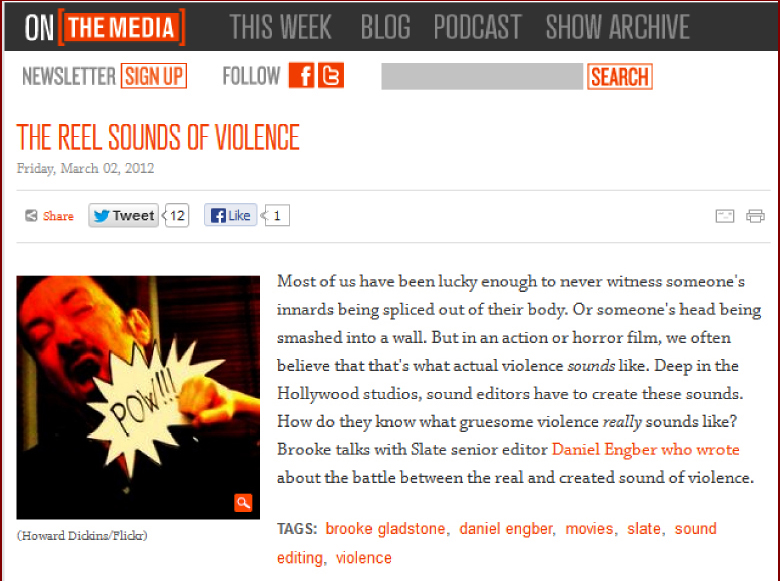On the Media, The Reel Sounds of Violence
The Reel Sounds of Violence
On the Media
This segment of National Public Radio’s On the Media program explores the trend of “sound inflation” in violent movie scenes — that is, the increasingly gruesome and exaggerated nature of sound effects that are used for fights and other acts of violence. These effects provide, as Slate editor Daniel Engber puts it, a “potent and precise soundtrack for brutality.” In this On the Media segment, cohost Brooke Gladstone interviews Engber about this trend.

Reading for Meaning
READING SUMMARY
Question 8.1
Summarize “The Reel Sounds of Violence.” Be sure to put the summary in your own words and to avoid using the sentence structure of the reading selection. Remember that your summary should restate the author’s main idea (or thesis) and include only the author’s most important supporting ideas.
Presenting the Subject
Making contrasts between the blander “sounds of violence” in films from the 1970s (and before) and the over-the-top sound effects in today’s films is one way that Engber demonstrates sound inflation. He establishes that sound inflation exists through vivid examples and sound clips instead of with statistics or testimony from sound engineers.

Write one or two paragraphs analyzing how Engber (with the help of his interviewer, Brooke Gladstone) presents his subject:
1
Write a few sentences about the differences between the punching sounds in Rocky and The Fighter (3:15-4:26). How does this example demonstrate sound inflation? Is there anything you would have added to the discussion of these contrasting sound clips?
2
Make a note of other movies and sound effects that Engber and Gladstone discuss. Why do you suppose that Engber singles out these films and effects? Do you think he provides enough examples to demonstrate that sound inflation exists? If not, what other examples might you have added?
3
Question 8.2
Engber suggests that realism has become more and more irrelevant in the creation of sound effects for violent movie scenes. Engber comments, “It’s almost like [sound editors] reject the idea that there is a real sound because who would know what it sounds like to hear a head being stomped in an elevator? So they talk about sounds that access some emotional response directly.” Does he do enough to explore the reasons that exaggeration has taken precedence over realism? Give examples to support your answer.